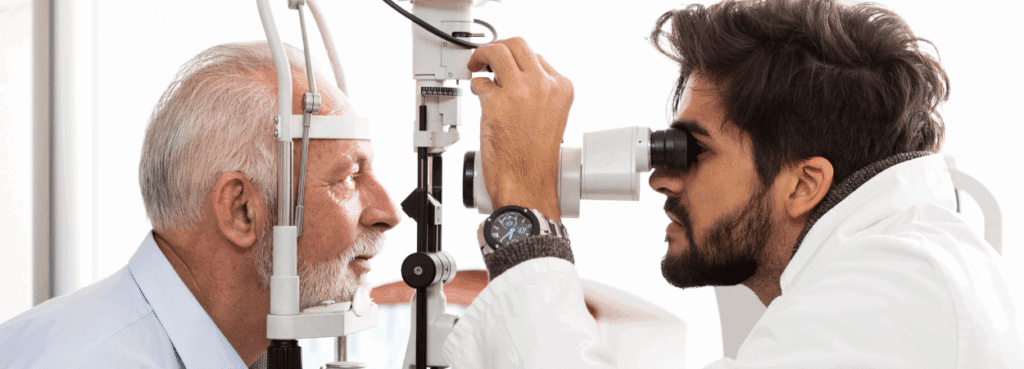
Not All Cataracts Need Surgery—Here’s How to Know What’s Right for You
If you’ve been told you have a cataract, you might feel uncertain about what comes next. At Sweeney Eye Associates, with convenient locations in both Richardson and Sunnyvale, Texas, we want to make one thing clear: not all cataracts require surgery right away. In fact, many patients can safely monitor their cataracts for years before needing any kind of intervention.
Our board-certified cataract specialists, Dr. Vincent Venincasa and Dr. Patrick Sweeney, have helped thousands of patients navigate this process—from early diagnosis through surgery, and everything in between. Their shared philosophy is simple: treat when necessary, monitor when safe, and always put the patient first.
Knowing when to watch and when to act is one of the most important decisions in your vision care—and it’s one we’re here to guide you through.
What Are Cataracts and How Do They Develop?
A cataract forms when the natural lens inside your eye becomes cloudy, usually as part of the aging process. This clouding can lead to blurred vision, light sensitivity, and other symptoms over time.
However, early-stage cataracts may cause minimal symptoms. Your vision may still be sharp enough with the help of updated glasses or contact lenses. That’s why we often recommend a “watch and wait” approach unless vision begins to interfere with your daily activities.
When Watching and Waiting Makes Sense
Cataracts typically progress slowly. If you can still drive, read, and enjoy your normal routines, surgery can usually wait. During this time, we’ll monitor your vision with regular exams to track any changes.
Think of this as the “maintenance phase.” You’re not in crisis, but you’re being proactive.
Signs It’s Time to Consider Cataract Surgery
There’s no one-size-fits-all answer, but here are some common signs your cataract may be ready for surgery:
- Vision remains blurry or hazy even with updated prescriptions
- Glare or halos around lights make driving difficult, especially at night
- You need significantly more light to read or see fine details
- Colors appear faded, yellowed, or dull
- Prescription glasses are no longer improving clarity
- You experience double vision in one eye
If these symptoms are impacting your lifestyle, it’s time to start the conversation about next steps.
Can Cataracts Become Too Advanced?
In some cases, yes. Cataracts that are left untreated for too long can become dense and more difficult to remove. These “mature” cataracts may increase surgical risk or complicate recovery.
That’s why regular eye exams are so important. We don’t just track your vision—we help you time your surgery for the safest, most effective outcome.
How We Monitor Cataracts at Sweeney Eye Associates
Our monitoring process includes:
- Dilated eye exams to examine the health of your lens
- Advanced diagnostic imaging to track progression
- Personalized discussions around your lifestyle and visual needs
We also listen—closely. Because knowing how your vision is changing matters just as much as what the charts say.
When Surgery Does Become the Right Move
Today’s cataract surgery is more than just lens removal. It’s an opportunity to improve your vision—sometimes better than you had before cataracts ever developed.
We offer premium intraocular lens (IOL) options designed to reduce or eliminate the need for glasses, including:
- Light Adjustable Lenses
- Toric Lenses for Astigmatism
- Multifocal and Extended Depth-of-Focus Lenses
And yes, financing is available, including 0% interest plans, to help you access these upgrades if and when you’re ready.
Still in the Watch-and-Wait Stage? Let’s Stay Ahead Together
If you’re not ready for surgery, that’s okay. But don’t go it alone. We’ll keep a close eye on your cataract, adjust your care plan as needed, and make sure you know when it’s time to take action.
10 Questions to Ask If You’ve Been Diagnosed with Cataracts
Answers from Dr. Patrick Sweeney & Dr. Vincent Venincasa, Cataract Surgeons at Sweeney Eye Associates in Richardson and Sunnyvale





